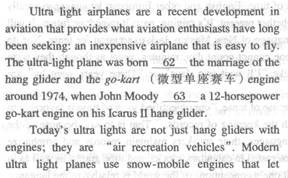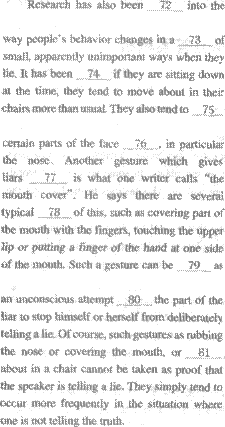根据下列短文,回答下列各题。 The use of deferential (敬重的) language is symbolic of the Confucian ideal of the woman, which dominates conservative gender norms in Japan. This ideal presents a woman who withdraws quietly to the background, subordinating her life and needs to those of her family and its male head. She is a dutiful daughter, wife, and mother, master of the domestic arts. The typical refined Japanese woman excels in modesty and delicacy; she "treads softly (谨言慎行)in the world," elevating feminine beauty and grace to an art form. Nowadays, it is commonly observed that young women are not conforming to the feminine linguistic (语言的) ideal. They are using fewer of the very deferential "womens" forms, and even using the few strong forms that are known as "mens." This, of course, attracts considerable attention and has led to an outcry in the Japanese media against the defeminization of womens language. Indeed, we didnt hear about "mens language" until people began to respond to girls appropriation of forms normally reserved for boys and men. There is considerable sentiment about the "corruption" of womens language--which of course is viewed as part of the loss of feminine ideals an morality--and this sentiment is crystallized by nationwide opinion polls that are regularly carried out by the media. Yoshiko Matsumoto has argued that young women probably never used as many of the highly deferential forms as older women. This highly polite style. is no doubt something that young women have been expected to" grow into"-after all, it is a sign not simply of femininity, but of maturity and refinement, and its use could be taken to indicate a change in the nature of ones social relations as well. One might well imagine little girls using exceedingly polite forms when playing house or imitating older women-in a fashion analogous to little girls us, era high-pitched voice to do "teacher talk" or "mother talk" in role play. The fact that young Japanese women are using less deferential language is a sure sign of change--of social change and of linguistic change. But it is most certainly not a sign of the "masculinizafiun" of girls. In some instances, it may be a sign that girls arc making the same claim to authority as boys and men, but that is very different from saying that they are trying to be "masculine". Katsue Reynolds has argued that girls nowadays are using more assertive language strategies in order to be able to compete with boys in schools and out. Social change also brings not simply different positions for women and girls, but different relations to life stages, and adolescent girls are participating in new subcultural forms. Thus what may to an older speaker, seem like "masculine" speech may seem to an adolescent like "liberated" or "hip" speech. The first paragraph describes in detail ________.
A.the standards set for contemporary Japanese women
B.the Confucian influence on gender norms in Japan
C.the stereotyped role of women in Japanese families
D.the norms for traditional Japanese women to follow
 题目内容
(请给出正确答案)
题目内容
(请给出正确答案)
 答案
答案








 A. from
A. from
 __________
__________
 __________
__________
 A. from
A. from

 Usually a conversation happens when two speakers are in the same setting and notice________
Usually a conversation happens when two speakers are in the same setting and notice________
 The unequal relations between rich and poor are in the control of __________
The unequal relations between rich and poor are in the control of __________





















